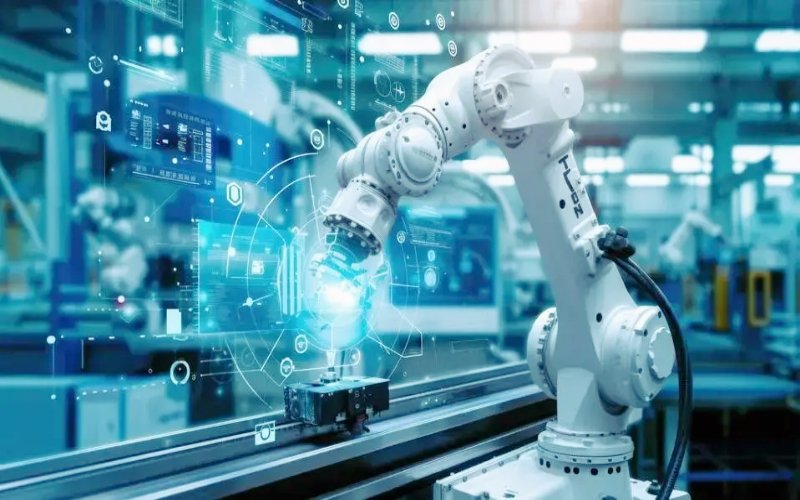In the ever-evolving world of technology, the way we interact with devices has seen significant changes. Enter AI-Powered Natural User Interfaces—a fascinating development that’s reshaping user experiences. These interfaces leverage artificial intelligence to make human-computer interaction more intuitive and seamless. In this article, we will explore the essence of AI-Powered Natural User Interfaces, their applications, benefits, and the challenges they face.
What Are Natural User Interfaces?
Natural User Interfaces (NUIs) are designed to allow users to interact with devices using natural language and gestures. Unlike traditional user interfaces that rely heavily on buttons and screens, NUIs aim for a more organic interaction style, making technology feel more accessible. Think of voice commands, touch gestures, and facial recognition—all of which are elements of NUIs.
The Role of AI in NUIs
Artificial intelligence plays a crucial role in enhancing the functionality of natural user interfaces. By processing vast amounts of data, AI can understand user commands more effectively and adapt to individual preferences. For instance, voice recognition software has advanced significantly due to AI, enabling it to comprehend various accents and dialects. This adaptability is what sets AI-Powered Natural User Interfaces apart from their traditional counterparts.
Real-World Applications of AI-Powered Natural User Interfaces
The integration of AI in natural user interfaces has paved the way for numerous applications across various sectors:
Smart Home Devices
Smart home devices have become increasingly popular, and their interaction model is often rooted in natural user interfaces. Users can control lighting, heating, and even security systems with simple voice commands. For example, saying “turn on the living room lights” activates a series of processes behind the scenes, demonstrating the power of AI in interpreting and executing natural language requests.
Healthcare Solutions
In healthcare, AI-Powered Natural User Interfaces can streamline patient interactions and improve care delivery. Voice-activated assistants can help medical professionals retrieve patient information or update records hands-free, allowing them to focus on patient care. This not only enhances efficiency but also reduces the risk of errors.
Automotive Industry
The automotive sector is witnessing a transformation with the introduction of voice-activated controls and gesture recognition in vehicles. Drivers can adjust navigation settings or change music tracks without taking their hands off the wheel. Such features enhance safety and offer a more engaging driving experience.
Benefits of AI-Powered Natural User Interfaces
The advantages of AI-Powered Natural User Interfaces are compelling:
Enhanced User Experience
NUIs provide a more intuitive way to interact with technology. Users can communicate in their own words rather than learning complex commands, making technology feel more user-friendly. This is particularly beneficial for older adults or individuals with disabilities who may find traditional interfaces challenging.
Increased Efficiency
With AI’s ability to learn and adapt, these interfaces can streamline workflows and reduce the time required to complete tasks. For instance, voice-activated assistants can perform multiple functions in a fraction of the time it would take to navigate through menus manually.
Challenges Facing AI-Powered Natural User Interfaces
Despite their potential, AI-Powered Natural User Interfaces face several challenges that must be addressed:
Language and Cultural Nuances
Language is inherently complex, with various dialects, slang, and cultural nuances. AI systems must continually improve to understand and interpret these variations accurately. This is crucial for ensuring that natural user interfaces are effective across diverse populations.
Privacy Concerns
As NUIs often rely on continuous data collection to function effectively, privacy concerns arise. Users may hesitate to interact with devices that require constant monitoring of their voice or gestures. Striking a balance between functionality and privacy is essential for widespread adoption.
The Future of AI-Powered Natural User Interfaces
Looking ahead, the future of AI-Powered Natural User Interfaces appears promising. As AI technology continues to evolve, we can expect even more sophisticated interactions. Imagine a world where devices can anticipate your needs, offering personalized suggestions based on your behavior and preferences.
Conclusion
In conclusion, AI-Powered Natural User Interfaces are revolutionizing the way we interact with technology. By leveraging the power of artificial intelligence, these interfaces create a more intuitive and efficient user experience. While challenges remain, the potential benefits far outweigh the drawbacks. As technology continues to advance, we can look forward to a future where human-computer interaction feels more natural and engaging than ever before.
Also visit on techitl.com.




